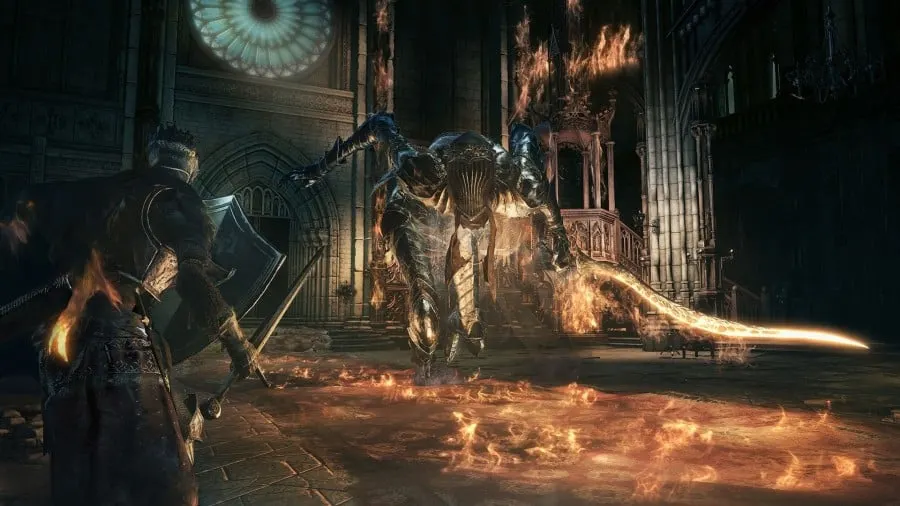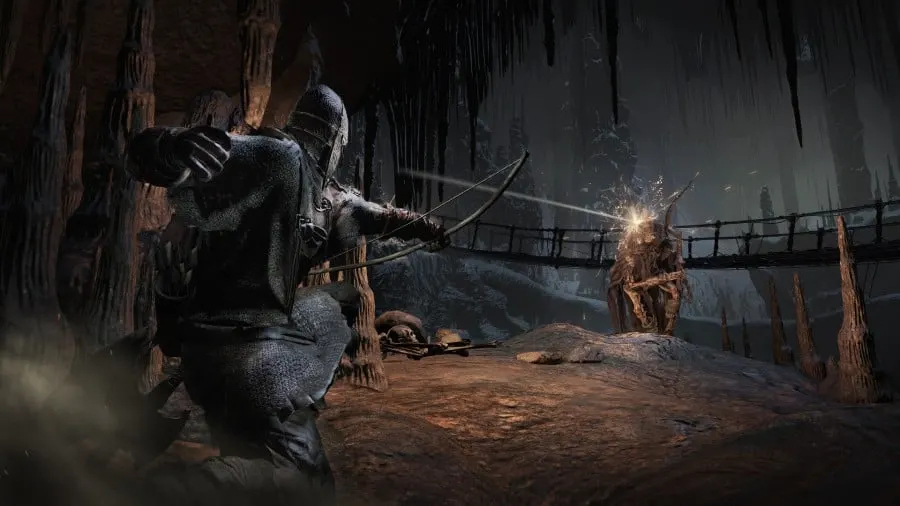If you’re tired of regularly seeing the game overscreen, learning to parry and riposte in Dark Souls 3 effectively could save you a lot of time. Dark Souls 3 is too hard to do the same fight repeatedly, so mastering the parry is essential to dominating the game and getting all the achievements.
All you need to parry is a shield or weapon with the parry ability and the timing to hit the R2 button right as the enemy attacks. Once the enemy staggers, a quick tap of R1 will land a crippling riposte.
However, executing the process can be easier said than done, and figuring out the timing for every enemy’s attack is half the battle. Now let’s get into the details so you can become the parry king and start making one of the most challenging games look effortless.
Parrying 101

Since you know the basics of parrying, it’s also essential to understand why it’s such a decisive move that every Dark Souls 3 player needs to master to survive. A properly executed parry will block all damage and leave space for a riposte. Ripostes are great because you will be completely immune to damage and stuns during the animation on top of doing critical damage.
You will perform a partial parry if you mistime your parry a bit. When this happens, you will take a bit less damage and avoid being stunned by the attack, but you will also lose a chunk of stamina.
Learning the proper timing for parrying is essential, but you also can’t rely solely on your ability.
Many attacks in the game are impossible to parry, so knowing your opponent is crucial. You won’t be successful if you walk around spamming the parry button, so try to parry sparingly.
The best Dark Souls players will integrate parrying into their bag of tricks but understand it is not a leading source for doing damage. Since parrying is all about timing, playing online and dealing with latency issues can also be an issue.
Equipping a throwing knife is a decent way to test if parrying will be possible while playing online. You will then want to throw the knife at your opponent and listen for when it hits. If the visuals match up well with the knife hitting’s sound effect, you probably have a good enough connection to parry.
You can use many items in the game for parrying beyond just shields. You can also parry with weapons, bare fists, or any shield with the shield icon next to them. Different tools can change how you parry, so learning the deeper mechanics can save you some scars as you know a new timing.
Parrying Mechanics In-Depth
The first thing any master of parrying will ask you is, what do you know about frames? Frames are moment-by-moment snapshots of your character as they execute a move. You will want to keep three parrying frames in mind as you progress through the game.
The Start-Up Frames are always the beginning of the parry animation. Your parry will be unsuccessful if you are in this frame as an attack is hitting. However, you can still achieve a partial parry for reduced damage and stamina hit.
Next are the Active Frames, which are what you aim to achieve. Suppose the enemy hits you during the active frames. In that case, your parry will be successful, staggering the enemy and opening up for a quick riposte.
Finally, you have the Recovery Frames during this portion of your party; you cannot perform any actions. This is your most vulnerable period, where you will be open to attacks.
Each parrying tool draws from different frame data tiers that alter your timing for executing the perfect party. These tiers are, for the most part, determined by the weapon class. This makes it so even tools like parrying daggers and parrying shields can feel different from using equally long active frame periods.
Regardless of which tool you are using, every parrying item in the game has the same sweet spot for timing, even as their parrying abilities extend slightly longer in either direction. If you can master the sweet spot, it won’t matter what tool you use to parry.
Katana can only parry within the sweet spot, so mastering that execution will translate to every other item in the game.
Figuring Out How to Parry Different Attacks

Now we will determine when to parry across the many attacks you’ll see in the game. Before we get started, however, these tactics won’t work as well for charged heavy attacks. The timing of these kinds of attacks will largely hinge on how long the attack is charged.
Running attacks are the most common from enemies as they rush into a close distance. If your opponent uses a Dagger or a Long Sword, you want to start your parry as their hand rises on the right side of their body. If they are using Gotthard Twinswords, you then want to parry as the left-hand start to rise.
Claymore wielders come at you with a spinning motion where you will want to start your parry right as the spin is ending. The blade should still be behind the opponent before they whip it around. You will want to start your parry when the blade is fully arched back for a Great Sword with its overhead arching attack.
Scimitars use a quick stabbing motion that can be difficult to time instead of watching the blade start your parry when the attacker hunches over. The same technique can be used when facing Sellsword Twin blades.
The Exile Greatsword is similar to the usual Great Sword parry, but the attack won’t arch back as far, so it is quicker. For an enemy with an Estoc, they will point the blade at you before hopping into a lunge. Start your party as they point the tip at you before the hop.
Washing Pole is long but still has a quick animation. You will want to begin your parry here as soon as the blade starts to move. When facing a Hand Axe or Great Axe, you can keep the same principles as the Great Swords, starting your parry when the attack is fully arched back.
This is the most common attack style, as the same method carries over to the Drang Hammers and Large Club. With the Large Club, you will want to parry as the weapon is almost entirely arched back.
For the Saint Bident, with its lunging spear attacks, you will want to parry when the spear moves to the side. The Drang Twinspears are slightly different; you must wait until both spears are on the attacker’s left side.
The Lothric Knight Long Spear is unique as one of the few weapons you will want to parry right as the tip is about to hit you. Meanwhile, the Red Hilted Halberd returns to the overarching style, except you will want to parry right as the Halberd starts to rise.
Great Scythes are another weapon that arches back and returns to parrying when the attack is fully arched. Claws also arch in a way, but you are looking for when the left-hand claw moves to the right.
Parrying Rolling Attacks
Some enemies use rolling attacks though they aren’t as tricky as running attacks due to much less variety. You will only need to learn two proper timings for rolling attacks for the most part.
Against a fast-rolling attack, you will want to parry the moment the roll is ending. You will want to start your parry for slower attacks with most weapons as the opponent gets back to their feet.
Claws are a few exceptions, as enemies will use a double-roll attack. When faced with this, you must start parrying in the middle of the second roll.
Watch out for Gotthard Twinswords or Drang Twinspears, as these weapons have swift rolling attacks. For these, you will want to parry during the middle of the roll.

